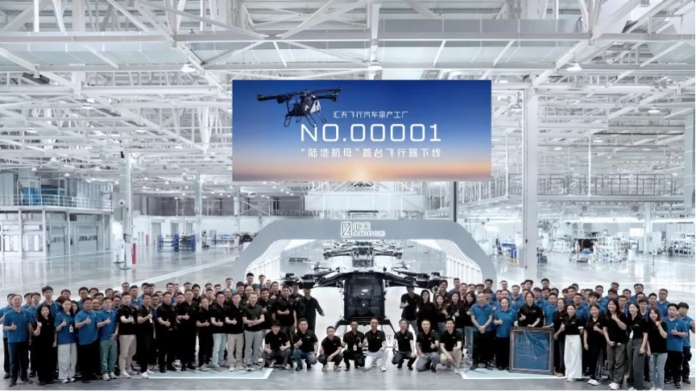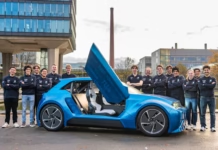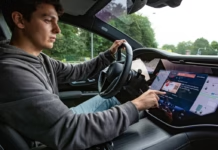Transforming Mobility with Physical AI
In 2025, XPENG unveiled groundbreaking advances in the field of physical artificial intelligence (AI). Marking a decisive leap in smart mobility. This shift is driven by the fusion of digital intelligence with embodied physical systems, spearheading a new era in electric vehicle (EV) applications. According to industry trends in 2025, the electric vehicle market is entering a phase of maturity that aligns with rapid innovation in AI-driven autonomous driving, robotics, and even low-altitude aerial travel. XPENG’s multifaceted approach integrates large AI models, self-developed hardware, and novel vehicle architectures. Designed not just for enhanced driving but creating new categories of autonomous and interactive mobility options. This positions XPENG as a pioneer in the evolution from traditional EVs to global physical AI-powered mobility solutions. The company’s developments promise to reshape urban mobility, industrial automation, and personal transport. This aligns with broader market forecasts showing exponential growth in AI-enabled electric vehicles worldwide.
XPENG VLA 2.0 and the Physical AI Revolution
At the heart of XPENG’s new mobility vision is the VLA 2.0, a large-scale physical world AI model capable of understanding, predicting, and interacting with the physical environment in real-time. Traditional AI systems that rely on segmented language and vision processing. VLA 2.0 uses a novel end-to-end approach to directly convert visual inputs into actionable commands. This model enhances autonomous driving capacities, humanoid robotics, and flying car intelligence with self-evolving learning and adaptation from massive real-world driving video data. XPENG’s proprietary Turing AI chip and optimized software stack enables depoloyment on vehicles. This enables billions of parameters to run efficiently on-board, achieving unprecedented autonomous decision-making in complex environments like narrow roads and mixed traffic. The vehicle-end integration exemplifies high-performance computing and represents a leap toward mass-produced physical AI applications. Thus significantly improving EV autonomy and responsiveness.
Advanced Intelligent Driving Features
Building on VLA 2.0, XPENG launched intelligent driving functions such as the “Narrow Road NGP.” Which excels in challenging road conditions, and a “Navigation-Free Automated Driving Assistance” system that operates globally without GPS reliance. These features enhance safety, reduce human intervention, and expand EV usability across diverse geographical regions. The model’s ability to recognize hand gestures and proactively respond to traffic signals demonstrates its sophistication in real-world driving scenarios. As a result further elevating the autonomous EV user experience.
Robotaxi and Next-Gen Intelligent Robotics
XPENG’s Robotaxi innovation represents the first full-stack, self-developed driverless taxi system in China, devoid of reliance on lidar and high-definition maps. Four Turing AI chips delivering 3000 TOPS computing power powers it. Robotaxi uses pure vision solutions to navigate complex global traffic environments. It is designed as a truly driverless vehicle, enabling rapid deployment through generalization learning. The Robotaxi ecosystem will open for external developers via SDK, collaborating with partners such as Amap to provide global robotaxi services. Simultaneously, the Next-Gen IRON humanoid robot showcases XPENG’s “extreme anthropomorphism” philosophy, featuring natural human-like movements supported by advanced AI chips. Enhanced with all-solid-state batteries for safety and energy density, the robot is designed for commercial applications such as industrial inspection and customer service. It will address prevalent challenges of data scarcity and mass production in robotics.
Flying Cars and Low-Altitude Mobility
XPENG’s ARIDGE flying car division illustrates the emerging low-altitude travel market, forecasted as a significant new frontier in mobility. Two flying systems were introduced, including the “Land Aircraft Carrier,” which combines ease of control with high safety standards, and the hybrid-electric “A868” tilt-rotor flying car with a 500 km range aimed at business travel. The mass production of these vehicles is underway with innovative assembly lines combining aviation and automotive standards. Flying cars promise to extend mobility beyond traditional roads, opening three-dimensional travel avenues for commuters and tourists alike. These developments align with growing interest in urban air mobility and low-altitude economy sectors. It signals XPENG’s foresight in integrating AI-powered vehicles across multiple transportation modes.
Conclusion and Market Impact
XPENG’s 2025 AI Day disclosures demonstrate the company’s commitment to evolving from an electric vehicle manufacturer to a global physical AI mobility explorer. By integrating AI chips, large models, robotics, and flying cars, XPENG pushes the boundaries of EV applications far beyond personal electric cars. Into intelligent autonomous systems that interact safely and intuitively with humans and the environment. Its mass production plans for these innovations herald a future where smart, AI-driven physical mobility enhances daily lives, industrial productivity, and urban infrastructure. This roadmap not only supports the sustainable transition from fossil fuels but also sets new standards for intelligent mobility solutions globally. XPENG’s technological advances resonate strongly with broader industry trends emphasizing autonomous driving, robotic assistance, and aerial mobility as pillars of the next-generation electric vehicle ecosystem.







